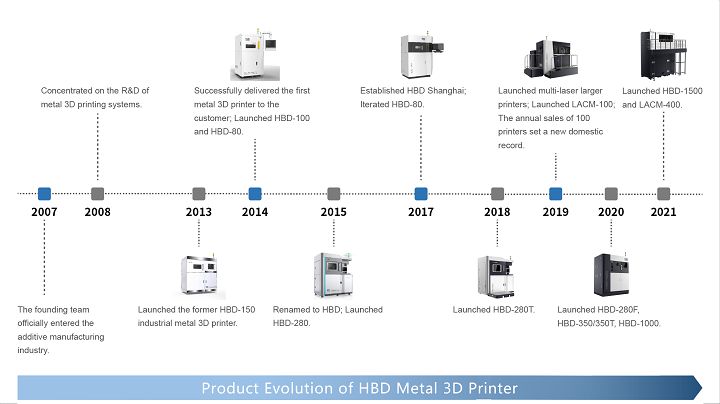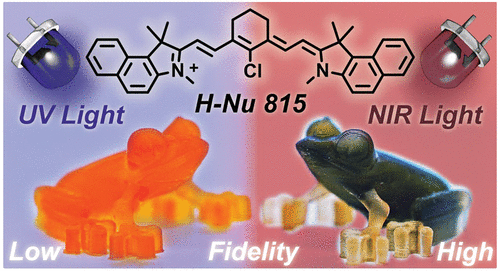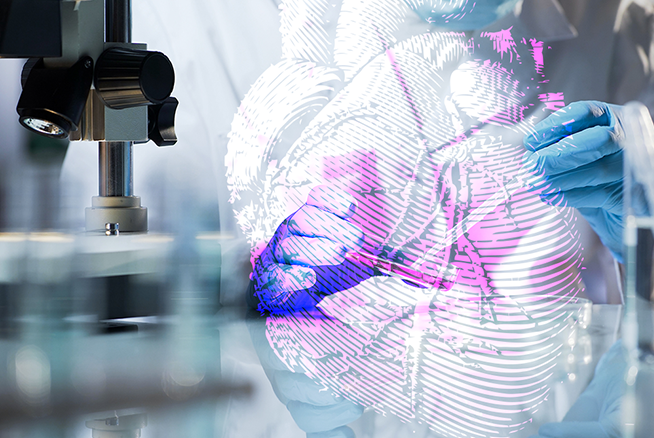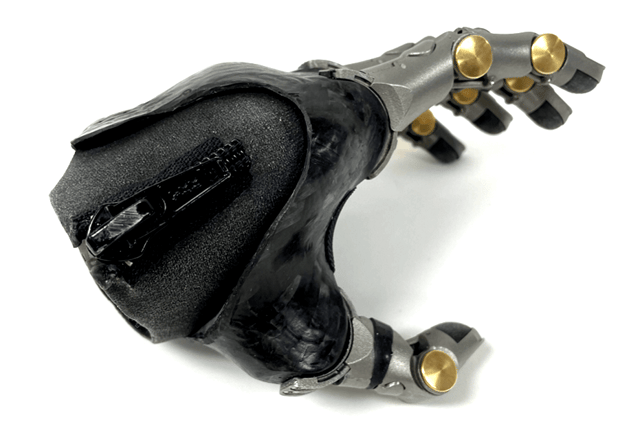In today’s 3D Printing News Briefs, we’re starting with a little business, before moving on to simulation, software, research, and more. HBD Metal 3D Printer closed a $60 million round in Series A financing. Siemens Advanta uses the AM-Flow system to enable an interactive AM factory design, and printpal launched its PrintWatch software and API for real-time monitoring of 3D printing jobs. Researchers developed a novel near-infrared photosystem for nearly “invisible” 3D printing, and regenerative medicine company Matricelf is working with Tel Aviv University on 3D bioprinting organs. Finally, 3D Systems published two case studies about 3D printing used in medical applications.
HBD Metal 3D Printer Receives $60M in Series A Funding
Chinese metal AM company HBD Metal 3D Printer announced recently that it had closed a $60 million round of Series A financing, which was led by Qianhai FOF, with participation from CITIC Securities Investment and Grand Flight Investment. The company has almost 20 years of experience in laser and metal AM, holds more than 200 patents, and helped build and formulate the country’s 3D printing evaluation system. HBD, which helped to pioneer the Laser Additive & Cutting Manufacturing (LACM) hybrid processing technology for finishing the inner surface of 3D printed metal parts, has developed a total of 23 metal 3D printer models, and delivered more than 500 systems to customers by the end of 2021. Well-known for a 3D printed nuclear reactor heat exchanger it created for a nuclear power plant, the company acquired nearly 6.5 acres of land last year and plans to build a new R&D and production facility there, and this financing round will help in that endeavor.
“Compared to the machine tool subtractive manufacturing system, as a subversive additive manufacturing system, metal 3D printing is rapidly maturing, and will become a new technology comparable to traditional machine tool processing and production methods in the future. The current mainstream aerospace, industrial, medical, mold and other fields, and other industries will also be more applied to metal 3D printing technology, giving birth to trillion-level market opportunities,” said Jianye LIU, the Founder and CEO of HBD. “With the spirit of “metal 3D printing craftsman”, HBD strives to improve the team, management, products and services, forms a back-to-back mutual trust cooperation relationship with upstream and downstream partners, and adheres to the principle of providing core competitiveness for partners in the long term. HBD is confident that it will do better in the future. While growing rapidly, HBD will also promote the faster and better development of the entire Chinese metal 3D printing industry.”
Siemens Advanta & AM-Flow Simulation Video
Moving on, Siemens Advanta was featured in a video, shot at Formnext 2021, by AM-Flow, all about how the Siemens consulting company uses AM-Flow’s simulation solutions to improve its 3D printing factory planning toolbox. The video features Siemens Advanta Key Expert Consultant Christian Rossmüller, as he explains how miniature 3D printed models of 3D printing equipment (super meta), connected with a simulation model, are placed on a table; then, a camera system detects the equipment, and if anything is moved on the table, you can then see it move in the virtual model. Rossmüller explained that it can be complicated to set or scale up a production facility using AM, but Siemens Advanta offers workflow simulation and digital tooling for factory design so customers can see it with their own eyes before investing. AM-Flow helps the company improve its complete process flow, so bottlenecks and logistics are sorted out.
“Siemens Advanta Consulting and AM-Flow automating 3D Print factories end-to-end together,” Stefan Rink, AM-Flow’s CEO, said in a LinkedIn post. “With the Siemens’ Advanta software and AM-Flow’s AI based Vision, Motion and Robotics modules in the digital library you can now design and simulate your fully automated factory (product output, floorplan in VR, lead times, routings, workforce and financials) easier than ever!”
AI-Based 3D Printing Defect Detection Software
Chicago-based technology company printpal.io has announced the launch of its PrintWatch software and API, which uses artificial intelligence to monitor 3D printing jobs for defects in real time. A camera is fixed on the print area, and the software takes the video stream and runs it through a machine learning model to detect various defects; when one is identified, PrintWatch tracks its development, and acts if the defect continues to get worse. Some of these actions are turning off the printer’s heat, sending a notification to the printer owner, and even stopping the print altogether, in order to save time and material, as well as lower the risk of damage.
Additionally, this software also runs an Anomaly Detection System in the background in addition to real-time detection, and this secondary system detects and flags subtle anomalies in a printer, so that users can schedule maintenance and keep the problem from becoming a bigger one that could damage the printer or its surroundings. PrintWatch runs the machine learning models on the cloud, so any device with internet can access the API, and the software is available through Octoprint as a plugin.
3D Printing “Invisible” with Near-Infrared Light Photosystem
Because of the need for violet and ultraviolet (UV) light-activated chemistry, some materials aren’t accessible in photopolymerization 3D printing processes, which are beneficial for optoelectronics applications because of their fast speed and excellent feature resolution. Researchers from the University of Texas at Austin published a paper that explains how near-infrared, or NIR, light in 3D printing—almost invisible to the human eye—can help improve the fidelity of features in composite 3D printed objects. The team created stock solutions for resin preparation using chemical compounds, difunctional reactive diluents, photoredox catalysts, and more, and photocured a three-component photosystem using NIR LED, with a 780 nm wavelength, in a customized DLP 3D printer. The researchers 3D printed dogbone mechanical samples with 12.3 mm gauge length, 1.17 mm gauge width, and 0.75 mm thickness, and post-cured the prints with UV light of 370 nm. Ultimately, they found that the composite 3D prints comprising nanoparticles had improved feature fidelity, thanks to the NIR light.
The abstract states, “The ability to 3D print structures with low-intensity, long-wavelength light will broaden the materials scope to facilitate inclusion of biological components and nanoparticles. Current materials limitations arise from the pervasive absorption, scattering, and/or degradation that occurs upon exposure to high-intensity, short-wavelength (ultraviolet) light, which is the present-day standard used in light-based 3D printers. State-of-the-art techniques have recently extended printability to orange/red light. However, as the wavelength of light increases, so do the inherent challenges to match the speed and resolution of traditional UV light-induced solidification processes (i.e., photocuring). Herein, a photosystem is demonstrated to enable low-intensity (<5 mW/cm2), long-wavelength (∼850 nm) near-infrared (NIR) light-driven 3D printing, “invisible” to the human eye. The combination of a NIR absorbing cyanine dye with electron-rich and -deficient redox pairs was required for rapid photocuring in a catalytic manner. The rate of polymerization and time to solidification upon exposure to NIR light were characterized via in situ spectroscopic and rheological monitoring. Translation to NIR digital light processing (projection-based) 3D printing was accomplished through rigorous optimization of resin composition and printing parameters to balance the speed (<60 s/layer) and resolution (<300 μm features). As a proof-of-concept, composite 3D printing with nanoparticle-infused resins was accomplished. Preliminary analysis showed improved feature fidelity for structures produced with NIR relative to UV light. The present report provides key insight that will inform next-generation light-based photocuring technology, such as wavelength-selective multimaterial 3D bio- and composite-printing.”
Matricelf & TAU’s Ramot 3D Printing Organs
Israeli tissue engineering and regenerative medicine company Matricelf (TASE: MTLF) has signed an exclusive global licensing agreement with Tel Aviv University‘s technology transfer company Ramot in order to commercialize a 3D organ and tissue bioprinting technological patent. The patent, which is still awaiting approval in the US and Europe, covers various aspects of the technology, which is based on liquid nano-molecules and produces scaled-up living human tissues and organs by 3D printing cells and extracellular matrices (ECM). Professor Tal Dvir from TAU’s Department of Biotechnology in the Life Sciences faculty, and Head of its Nanotechnology Center, co-founded Matricelf and developed the technology, which allows for high-resolution bioprinting and was used in 2019 to 3D print cardiac patches and heart tissue structures. Per the agreement with Ramot, Matricelf will receive global rights to the technology, as well as exclusivity to develop, produce, and commercialize it. With 36 months of signing, the company must commit to sign at least one commercialization agreement with a third party, subject to approval from Ramot.
“We are happy to agree another collaboration with Tel Aviv University and see this as a strong vote of confidence in the company and its scientific and commercial ability, in the field of tissue engineering, which is the future of medicine. 3D bioprinting is in the forefront of this sector, which is growing by an average of tens of percentages annually and is expected to be worth billions of dollars by 2024. Applying the technology, both in the development of the company, primarily by treating injury to the spinal cord, as well as commercialization to various partners in the sector, significantly increases the potential for growing the value of the company in the foreseeable future and strengthening its status as a leading global player in the sector,” said Matricelf CEO Dr. Asaf Toker.
3D Systems Medical 3D Printing Case Studies
Finally, 3D Systems published two case studies regarding medical 3D printing applications, the first of which focuses on partial hand prosthetics company Point Designs and how it scaled its manufacturing process with help from 3D Systems’ Application Innovation Group. When demand for the company’s Point Digit prosthetic finger solution grew greater than its in-house capacity, Point Designs reached out to 3D Systems as a production partner. The solution was designed with 3D printing on the brain from the get-go, with DfAM used to create organic shapes and semi-hollow structures, but by collaborating with 3D Systems to develop a new print strategy, Point Designs was able to develop a superior product. Point Digit was also transitioned from steel to titanium in six months, which allowed for a 30% weight reduction, and the live hinge that allows for natural rotation is printed as an assembly in place—ideal due to its small internal components.
The other case study is about hearing aid company WS Audiology, which adopted 3D Systems’ high-speed Figure 4 system at its Lynge, Denmark site to fabricate production-grade fixtures, grippers, and prototypes in order to improve the quality and function of its injection molding processes. The company’s Widex hearing aids feature many injection molding parts such as contacts, encasings, and electronics blocks, which are handled robotically with metal grippers and suction cups. Unfortunately, the grippers often leave marks on the parts and take a long time to make, and the suction cups have a hard time properly orienting parts. Using the Figure 4 Standalone, which is a versatile, projection-based technology that offers accuracy with its non-contact membrane, the company can produce parts without tooling, and much faster as well. Figure 4 PRO-BLK 10 and Figure 4 RUBBER-65A BLK materials are used to print WS Audiology’s production tooling applications.
Subscribe to Our Email Newsletter
Stay up-to-date on all the latest news from the 3D printing industry and receive information and offers from third party vendors.
You May Also Like
3D Printing Unpeeled: New Arkema Material for HP, Saddle and Macro MEMS
A new Arkema material for MJF is said to reduce costs per part by up to 25% and have an 85% reusability ratio. HP 3D HR PA 12 S has been...
3D Printing News Briefs, January 20, 2024: FDM, LPBF, Underwater 3D Printer, Racing, & More
We’re starting off with a process certification in today’s 3D Printing News Briefs, and then moving on to research about solute trapping, laser powder bed fusion, and then moving on...
3D Printing Webinar and Event Roundup: December 3, 2023
We’ve got plenty of events and webinars coming up for you this week! Quickparts is having a Manufacturing Roadshow, America Makes is holding a Member Town Hall, Stratafest makes two...
Formnext 2023 Day Three: Slam Dunk
I’m high—high on trade show. I’ve met numerous new faces and reconnected with old friends, creating an absolutely wonderful atmosphere. The excitement is palpable over several emerging developments. The high...






































